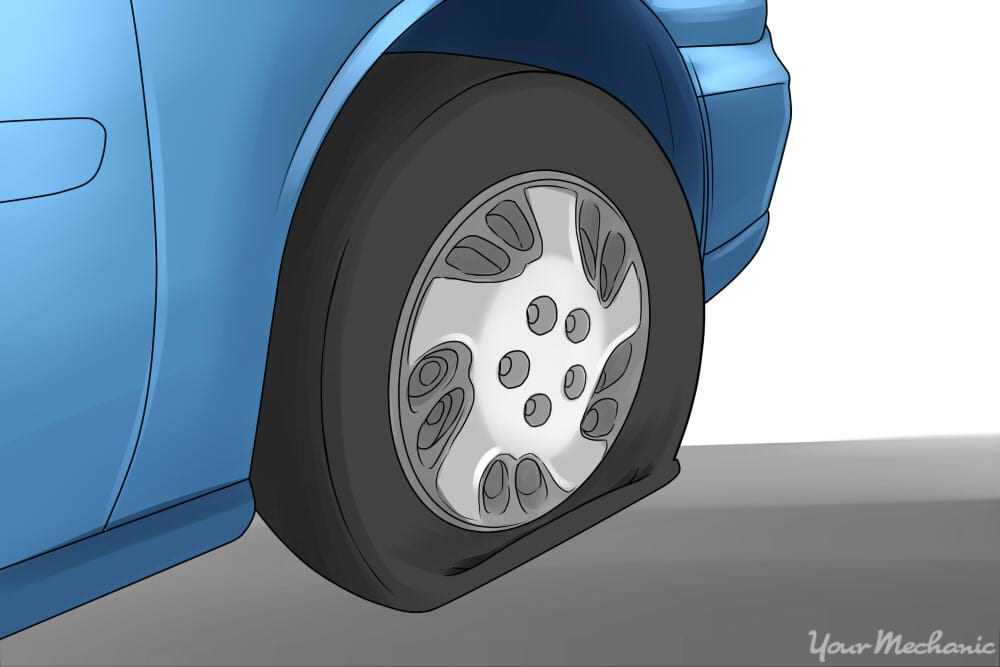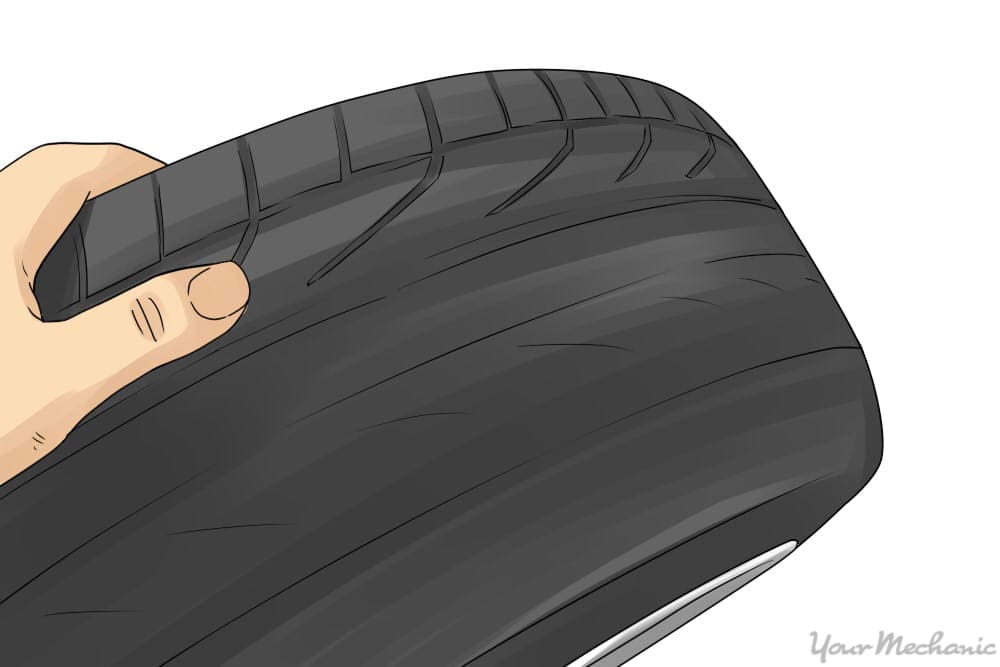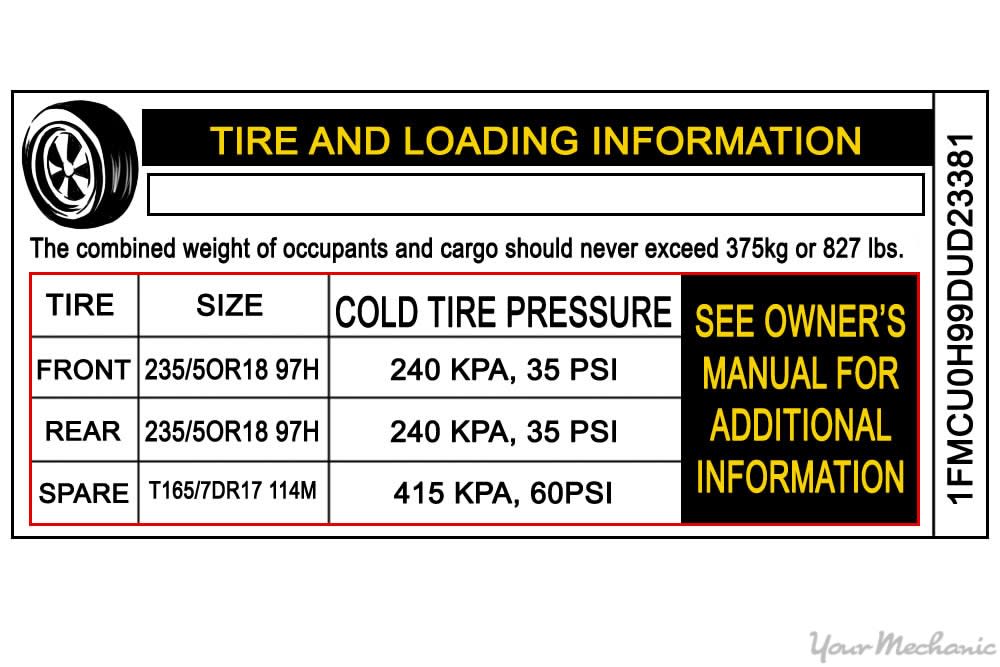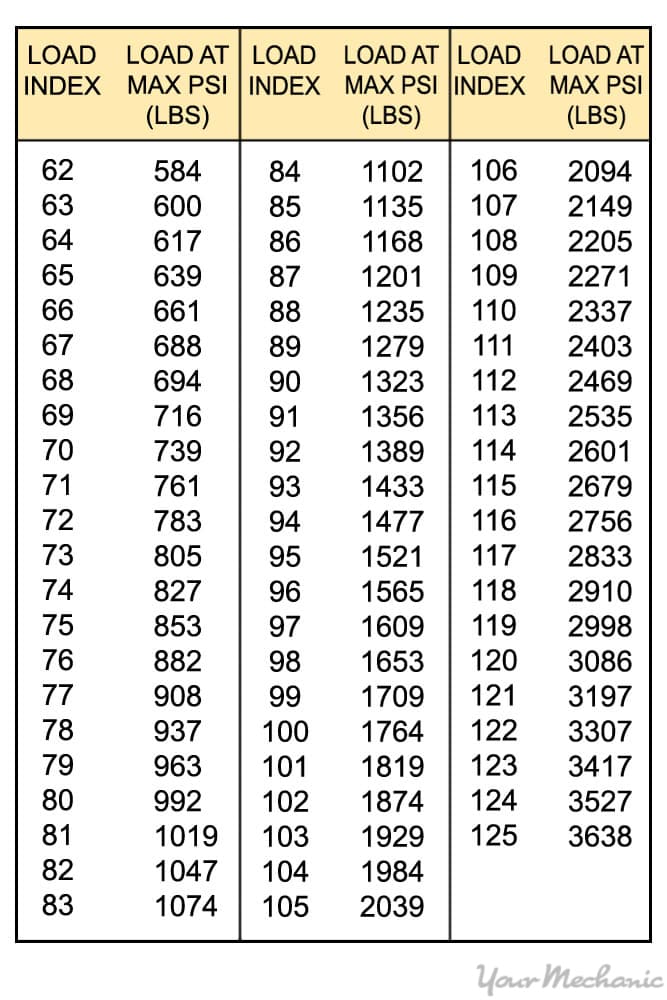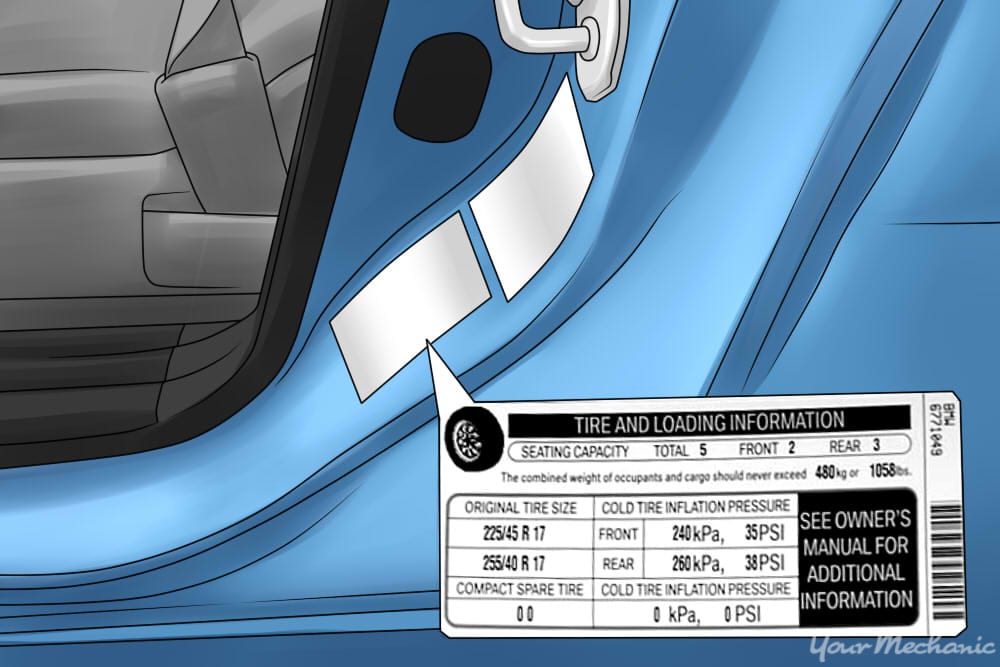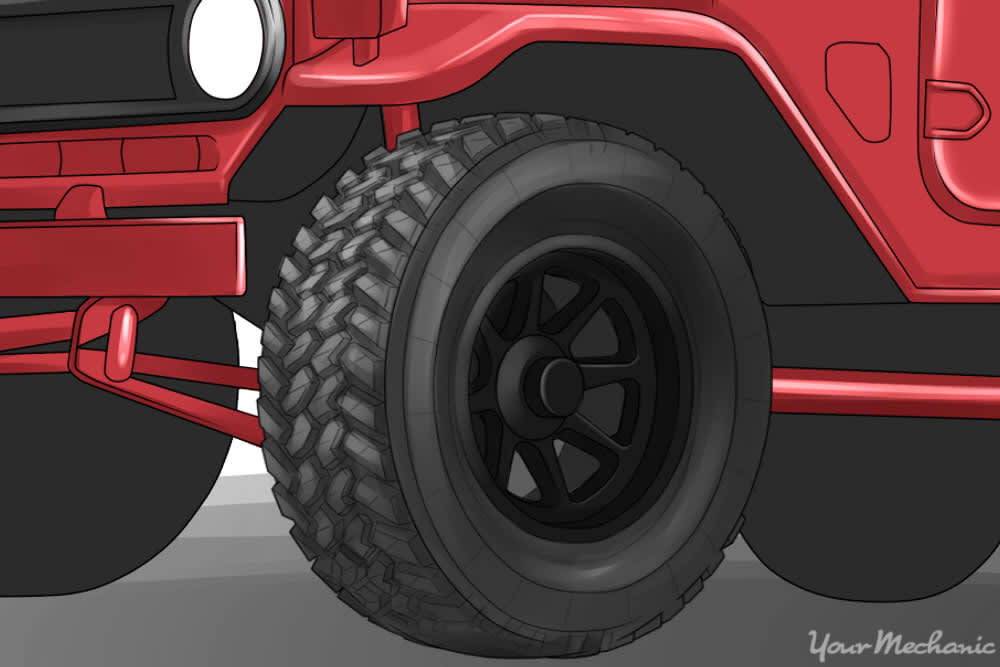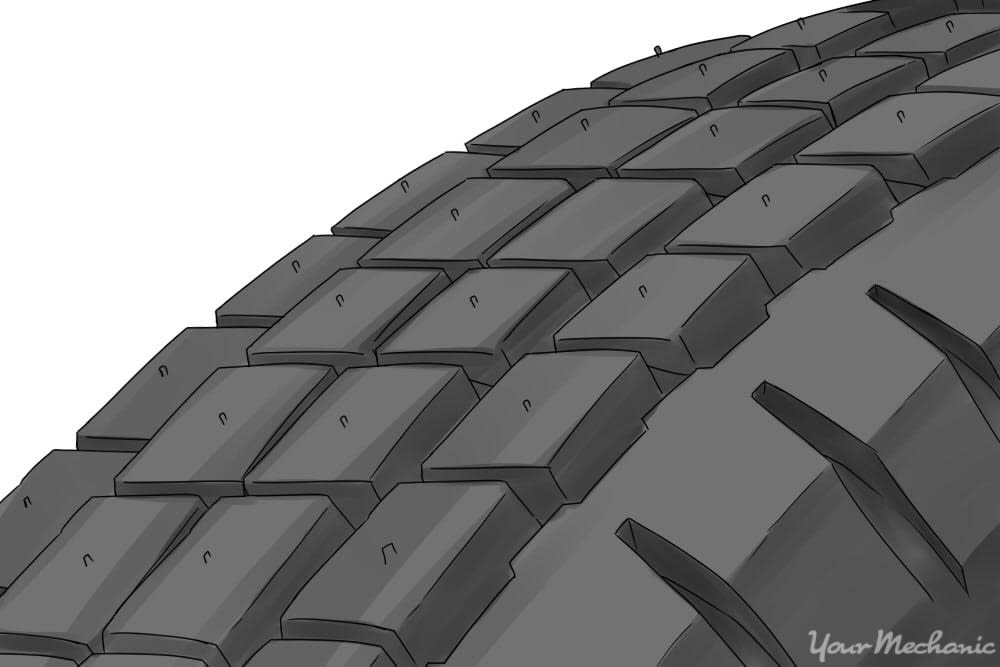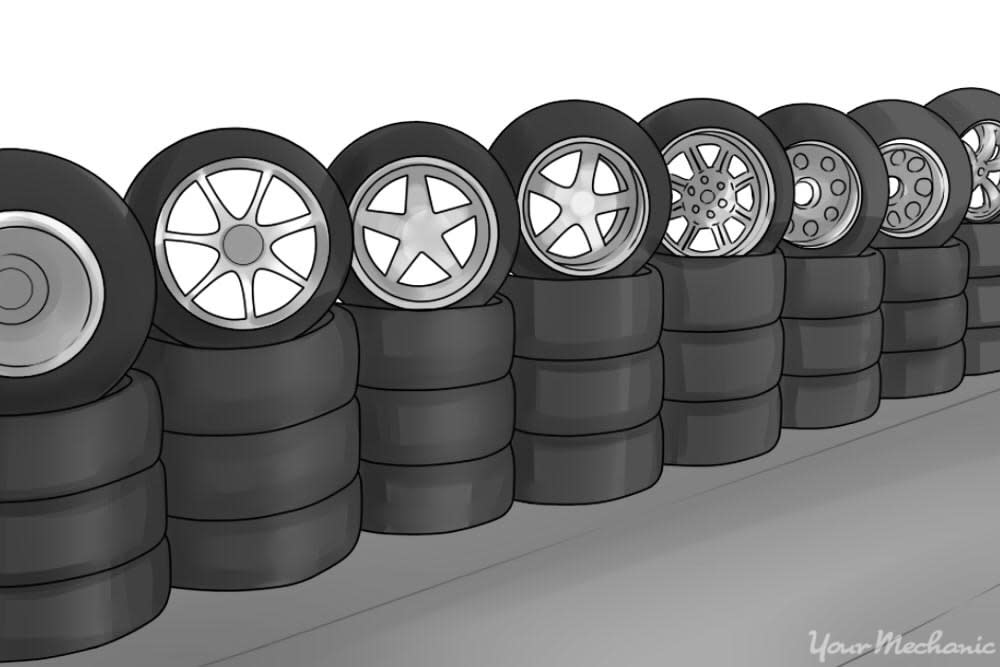

Your vehicle requires traction in order to accelerate, brake efficiently, and maintain control when you are steering. In order to do those things well, you need to own good tires on your vehicle.
There are hundreds of different tire sizes, models, and designs created from dozens of tire manufacturers. Choosing a tire that is right for your vehicle can be a difficult and confusing decision. There are several factors at play in making your decision including:
- Brand
- Budget
- Quality of tire
- Tire size
- Tire usage
You can select the right tire for your vehicle using the following guidelines.
Part 1 of 4: Decide how many tires you need to buy
In some cases, it makes sense to replace only one tire, however, tires are most commonly replaced as a pair or a set of four. Deciding how many tires you need to buy can help you determine which ones are the best for you.
Step 1: Determine how many tires have obvious failures. If your tires are new or almost new, and you experience a failure on one tire that cannot be repaired, you may be fine replacing just one tire.
This is true of a tire with a sidewall puncture that cannot be repaired even if the tire is new or almost new.
If you are replacing just one tire, match it with the same brand, model, and size as the rest of your tire set, or at least with the tire on the same axle.
- Warning: Using a mismatched tire on the same axle can cause traction problems as one tire may perform differently than the others.
Step 2: Look for excessive wear in pairs. If you have one pair of tires that has excessive wear and needs to be replaced while the other two tires are still in good condition, you can replace just the worn pair of tires.
This practice is only for use on front-wheel drive or rear-wheel drive vehicles. It is not recommended to replace a pair of tires for all-wheel drive or four-wheel drive vehicles.
- Warning: All-wheel drive and four-wheel drive vehicles require that their tires are all similar in size and wear, or excessive wear and tear or damage can result on the drivetrain.
If you are replacing just two tires, match the tire size, speed rating, and load rating with the pair that will remain on the vehicle.
You can opt for a different model from the same brand or even a different brand of tire in the same category if you are replacing a pair of tires.
Step 3: Consider replacing your entire set. If you have more than two tires in need of replacement or you drive an all-wheel drive or four-wheel drive vehicle, replace the tires as a complete set of four.
- Tip: If you are replacing the full set of tires, you can choose an alternate model and brand of tire if you wish. You may also change the speed rating and load rating of your tires to a higher level if you want to improve your car’s performance.
You can read more about knowing when to replace your tires in our article, “How to Know When to Replace Tires.”
Part 2 of 4: Select the right size of tire for your vehicle
You can purchase the most expensive tires available, but it won’t do you any good if they don’t fit your vehicle. You can narrow down your tire options by only looking for tires of the appropriate size for your vehicle.
Step 1: Find the tire size that works for your vehicle. You can locate the tire size on the sidewall of your tire or on the driver’s door placard along with the tire pressures.
Your factory tire size is indicated in the following format:
Step 2: Identify the tire type. The prefix to the first number tells you about the type of tire.
It is commonly “P” for a passenger tire or “LT” for a light truck tire.
The size of the tire begins after the prefix.
Step 3: Identify the tire’s section width. The first number in the sequence is the section width of the tire (in millimeters) at the tire’s widest inflated point.
In the example above, the section width is 185.
Step 4: Identify the tire’s aspect ratio. The next number is the aspect ratio, or height of the tire from the bead to the tread, measured as a percentage of the section width.
In the example image, the aspect ratio is 75, meaning the tire sidewall height is 75% of the width of the tire.
Step 5: Confirm the tire’s construction. Nearly all tires will have the letter “R” for radial construction.
Step 6: Find out the rim diameter. The last number in the tire size is the rim diameter that the tire fits onto.
In this example, the number indicating the tire diameter is 14. This means that the tire is exclusively designed for use on a 14” inch rim.
Step 7: Find the load rating. After the tire size is the load rating and speed rating of the tire.
In the example above, 82 is the load rating, and S is the speed rating.
The load rating indicates how much weight the tire can support. View this table to see different load ratings.
The speed rating indicates the speed that the tire can safely maintain over time.
- Tip: Only use the same load rating and speed rating as your original tires or a higher rating. Do not use a lower speed or load rating than your car is originally equipped for as this can result in tire failure.
Learn more about load and speed ratings in our article: “Understanding Tire Service Descriptions: Speed Rating and Load Index.”
Step 8: Confirm the correct tire size by checking your driver’s door placard. Use the same tire size as indicated on your vehicle’s door placard or as the tires that originally came with your vehicle for the best results.
You can locate this information by opening your driver’s side door and checking along the edge of the door.
- Note: If you select a different tire size for your vehicle, you may need to buy a different set of rims for your car. You will definitely need to buy a new set of rims if you select a tire with a different rim size.
Part 3 of 4: Choose a type of tire based on road conditions
The type of tire you choose depends mainly on your vehicle type, vehicle usage, and geographic location.
Step 1: Determine if you want a passenger tire. Passenger tires are indicated as a “P” prefix on the tire size on the tire’s sidewall.
All car models from subcompact cars to full-size luxury cars use passenger-rated tires. Some SUVs and trucks come with passenger tires while some use light truck tires indicated with an “LT” as the tire size prefix.
Passenger-rated tires offer the least rolling resistance, the best traction on road surfaces, and a quiet ride.
The tread design on a passenger tire is asymmetric with lots of sipes or lines in the tread and has differing styles of tread blocks.
Passenger tires are also less expensive than light truck tires in nearly all instances.
Step 2: Determine if a light-truck tire is best for your vehicle. If you plan on driving on rugged terrain such as dirt or mud roads, rough gravel, or off-road, a light-truck tire is your best choice.
Light truck tires offer a stiffer sidewall, knobbier tread, and a more rugged shoulder tread than passenger tires.
Light truck tires often have more road noise on the highway and a rougher feel through the steering wheel.
Step 3: Consider winter driving conditions. Determine if you need a tire rated for winter conditions. If you live or drive regularly in an area that receives snow and freezing temperatures, select a tire that is rated for winter driving.
Winter tires are indicated with an image of a snowflake in a mountain outline marked on the sidewall.
Dedicated winter tires are also available and more common than ever for those who want even greater traction in slippery conditions.
Winter tires have a softer rubber compound that stays pliable in cold weather, allowing for better traction in cold conditions. They also contain more sipes in the tread allowing for better grip.
Studded winter tires are also available for those who wish for even better winter driving traction.
Note: In most jurisdictions, winter tires must be removed by April 1st and can be installed again on November 1st each calendar tires since studded tires can damage paved road surfaces. If you equip your car with dedicated winter tires, they should be removed when the temperature is consistently above 45 degrees Fahrenheit, or the softer rubber will wear excessively during the summer months.
Tip: Learn more about snow tires in our article, “All About Snow Tires.”
Part 4 of 4: Determine the best quality for your budget
You get what you pay for when it comes to tire purchases. More expensive tires usually have been designed to be more efficient, more durable, and longer lasting than inexpensive tires.
Step 1: Consider the quality. Don’t buy the cheapest tire you can find. While an expensive tire may cost twice the amount of an economy tire, it may improve your fuel economy and last considerably longer than the economy tire.
Higher quality tires will also keep you operating more safely on the road, preventing costly accidents and potential injuries.
Step 2: Purchase a well-known brand of tire for your vehicle. Your tires are the only part of your car that make contact with the ground and are responsible for you and your passengers’ safety.
The rule of thumb for buying tires is to buy the highest quality tire possible that you can afford.
Common, well-known brands include:
- BFGoodrich
- Bridgestone
- Continental
- Firestone
- Goodyear
-
Hankook
- Michelin
- Nokian
Tip: For more information about tire quality, visit our article “How to Buy Good Quality Tires.”
The next time you need to choose a tire or tire set, make sure that you follow the steps above to make a purchase that best suits your car’s requirements and your needs as a driver. Choose the correct size for your tire and make sure that the tire is of good quality for a great driving experience.
Having tire trouble or excessive wear can sometimes be an indicator of other problems on the car, such as brakes, suspension, or steering issues. If you would like to have a professional inspect your tires for excessive or uneven wear, a certified mechanic from YourMechanic can visit your home or office to help guide you through any repairs or installations.


